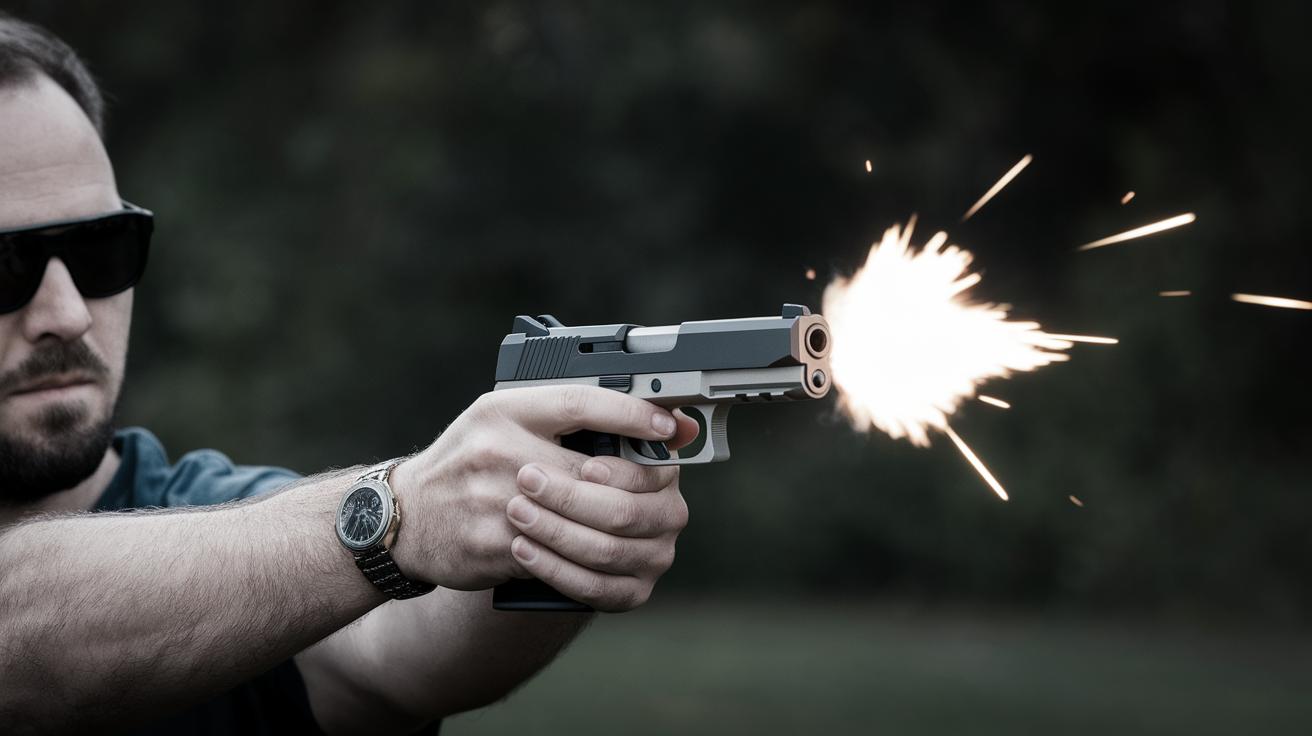Mastering Handgun Basics: A Guide to Safe and Effective Shooting
Understanding how to fire a handgun effectively and safely is a vital skill for anyone wishing to master pistol shooting. This guide will break down the process into fundamental components: proper stance, grip, sight alignment, and trigger control. Starting with the power stance, a robust foundation is formed, followed by the high hand grasp and solid grip, which ensure control. Learning front sight focus enhances accuracy, while smoothly rolling the trigger contributes to precision. We’ll offer suggestions to refine these skills and improve your shooting proficiency. By the end of this guide, you should be equipped with the necessary techniques to enhance both confidence and safety when operating a handgun.
The “Power Stance”
Maintaining the correct stance is essential for firing a handgun accurately and safely. The “Power Stance” forms the foundation of this process. By adopting a stance that offers balance and stability, shooters can absorb recoil more effectively and maintain control of the firearm. To achieve this stance, position your feet shoulder-width apart, slightly leaning forward.
Ensure that your knees are slightly bent to act as shock absorbers, and distribute your weight evenly across both feet. This posture allows for better control and aids in quicker target acquisition. Remember, a good stance enhances your balance, stability, and ability to manage recoil, so practice diligently to find your most comfortable and effective position.
High Hand Grasp
The “High Hand Grasp” is vital for ensuring that the handgun is firmly secured in your hand. Position your hand as high as possible on the backstrap of the handgun without putting yourself in jeopardy from the slide’s movement. Ensuring the webbing between your thumb and forefinger is placed high on the grip reduces muzzle flip.
This grip technique minimizes the pivoting motion caused by recoil, and offers improved control during shooting. With continuous practice of the high hand grasp, handling becomes instinctual, allowing for increased accuracy and comfort.
Hard Grip
Establishing a hard grip provides the necessary force to control the handgun effectively during and after discharging a round. While maintaining your high hand grasp, wrap your other fingers around the grip, using your non-dominant hand to support and stabilize the dominant hand.
Both hands should compress the pistol grip securely without excessive force, which could cause tension and reduce shooting accuracy. The key is to maintain a stable yet relaxed grip that allows for fluid movements. Muscle memory from practicing this grip ensures you can hold and fire efficiently under various conditions.
Front Sight
Front sight focus is crucial for aiming accurately. Align your front sight with the rear sights while concentrating primarily on the front sight. The front sight should be positioned in the center of the rear sight notch and leveled evenly with the rear sight top. Focus on keeping the front sight crystal-clear in your vision while allowing the target and rear sight to become slightly blurred.
This method of sight alignment ensures that your shot is more likely to hit the intended target as you’re focusing on the relationship between the sights rather than the target itself. Consistent practice with this focus will enhance precision and contribute to improved shooting skills.
Smoothly Roll the Trigger
Smooth trigger control is an integral part of accurate shooting. Instead of jerking the trigger, which can lead to missed shots, aim to smoothly roll it back. Place the pad of your index finger on the trigger and apply slow, steady pressure until the gun discharges.
Engage in dry fire practices to develop a consistent and controlled trigger pull. This helps in building the muscle memory needed for effective shooting, reducing the anticipation that often causes shooters to flinch or deviate off target.
Some Suggestions
Improving your handgun shooting skills requires regular practice and attention to detail. Consider joining local shooting clubs or taking courses to enhance your techniques through professional guidance. Engaging in friendly competitions also provides a constructive environment for progress and skill building.
Additionally, invest time in learning about firearm maintenance and safety precautions. Understanding your handgun’s mechanics will further support skill development, as a well-maintained firearm performs more reliably and aids in building confidence in your abilities.
Leave a Reply
We invite readers to share their thoughts and experiences related to handgun shooting. Whether you have insights on refining technique or suggestions for newcomers, your contributions can help create a more informed and engaged community. Feel free to leave your comments below.
Next Steps
| Aspect | Key Points |
|---|---|
| The “Power Stance” | Focus on balance and stability with a shoulder-width apart stance; lean slightly forward and bend knees. |
| High Hand Grasp | Position hand as high as possible on the backstrap to reduce muzzle flip; ensures better control and comfort. |
| Hard Grip | Use both hands to secure the grip without excess force; practice for a natural holding posture. |
| Front Sight | Maintain focus on the front sight for improved aiming and accuracy; regular practice is necessary. |
| Smoothly Roll the Trigger | Control trigger pull with slow, steady pressure; practice dry firing to build muscle memory. |
| Some Suggestions | Join shooting clubs, participate in competitions, and learn firearm maintenance for continued improvement. |
